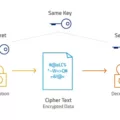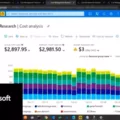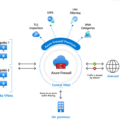Data center monitoring is an essential part of any company’s IT infrastructure. It not only helps to ensure that the data center is running smoothly and efficiently but also helps to identify potential issues before they become major problems.
Data center monitoring involves measuring and tracking performance, availability, utilization, and security. Determining what metrics need to be monitored depends on the size and complexity of the data center and the services it provides. Monitoring can take place at any level of detail from a single server to an entire data center. The main goal is to ensure that all systems are performing optimally and that there are no external threats or internal issues that could cause downtime or data loss.
The most important aspect of data center monitoring is being able to detect problems quickly so they can be addressed before they cause any major damage or disruption. This requires setting up alerts so that whenever something goes wrong, a team member can be notified and take action immediately. Commonly monitored metrics include CPU usage, memory consumption, disk I/O, network bandwidth usage, power consumption, storage capacity, temperature in the server room, and more.
Having access to real-time analytics allows teams to quickly identify resource bottlenecks or over-utilized resources which can help improve overall efficiency in the data center environment. Additionally, by having detailed performance analytics available in real-time it’s possible for teams to proactively monitor for potential issues rather than waiting for an issue to occur before taking action.
Data centers are complex environments with many moving parts so it’s important that teams have access to comprehensive monitoring solutions that provide visibility into all aspects of their infrastructure – from physical servers to virtual machines and applications running in the cloud. A good monitoring solution will provide visibility across multiple layers including hardware devices such as routers and switches as well as software components such as databases and applications running within virtual machines or containers. The best solutions will also allow teams to customize their dashboards so they can focus on specific areas within their environment such as power consumption trends or disk usage stats over time.
Ultimately data center monitoring helps organizations keep their systems running optimally while ensuring maximum uptime for their customers so they don’t lose out on revenue due to downtime or slow performance issues caused by system problems. Implementing a comprehensive monitoring solution is essential for keeping any IT infrastructure up and running reliably while providing insight into potential areas where improvements could be made in order to maximize efficiency within the data center environment.
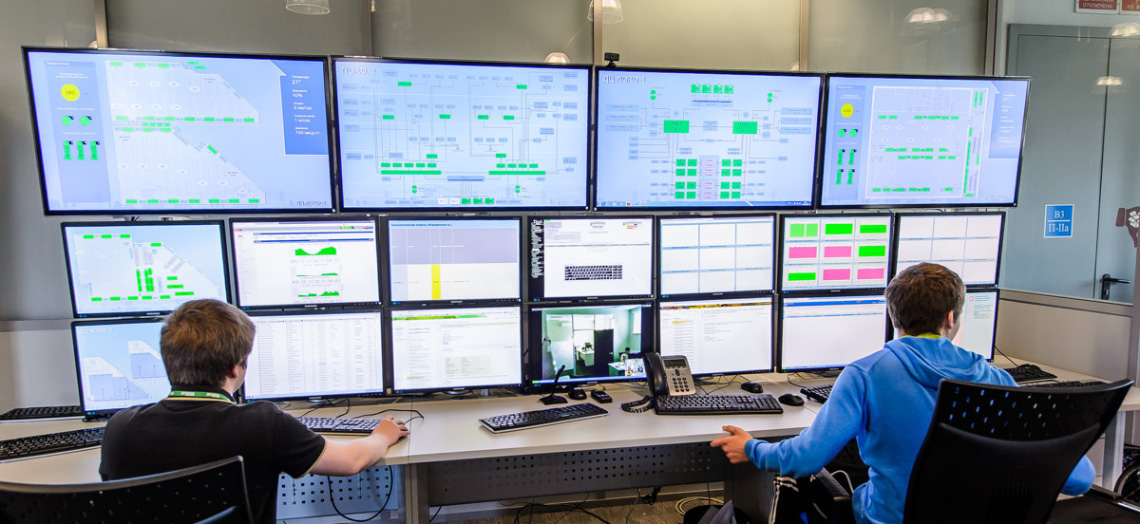
Monitoring Data Centers: Understanding the Basics
Data center monitoring is an essential component of managing IT infrastructure in modern data centers. It enables organizations to monitor the performance of their data center devices and networks in near real-time, giving them insight into how their systems are performing and helping them to identify potential problems before they become serious. Data center monitoring provides a centralized view of all devices connected to the data center network, allowing administrators to collect and analyze data from multiple sources. This can be used to generate reports that provide an overview of system performance, allowing administrators to identify any issues quickly and take corrective action accordingly. Data center monitoring also supports proactive management by enabling administrators to configure devices remotely, helping them to ensure systems remain compliant with industry regulations and best practices.
Monitoring Key Areas in a Data Center
1. Network Connectivity: This should be monitored to ensure that systems are able to access the network and that data is being sent and received in a timely manner. Network monitoring should include tracking response time, packet loss, bandwidth availability, and jitter.
2. Server Performance: To ensure that applications are running optimally, server performance should be monitored regularly. This includes tracking server utilization, memory usage, processor utilization, disk I/O rates, disk space availability, log files, and errors.
3. Storage Performance: Monitoring storage performance is important to ensure the optimal performance of applications and services in the data center. This includes tracking throughput on storage devices as well as latency on file system accesses.
4. Environmental Conditions: Maintaining proper environmental conditions such as temperature and humidity are crucial factors for the proper functioning of the data center infrastructure. Monitoring the conditions can help prevent outages due to overheating or humidity levels that are too high or low for the equipment being utilized in the data center.
5. Security: Data centers must be monitored for potential security threats such as unauthorized access attempts or malicious activity originating from within the network itself. Security monitoring should include tracking user activity logs, network traffic patterns, intrusion detection systems, and malware scans to identify any suspicious activity occurring within the data center environment.
Managing a Data Center
Data center management is a complex task that requires careful planning and execution. To effectively manage a data center, there are several important best practices to consider.
Firstly, it is essential to measure and monitor all aspects of the data center, including power usage, cooling systems, and the environment within the space. This will allow for better forecasting of future needs as well as ensure that current demands are being met.
Secondly, effective power usage should be considered when planning for any new equipment or services that will need to be added to the data center in order to increase efficiency and reduce costs. Additionally, it is important to consider various cooling options in order to prevent overheating of equipment which can lead to costly repairs or replacements.
Thirdly, having multiple backups and redundancy plans is essential for ensuring the continuity of operations should any unforeseen events occur. This includes having both physical backups as well as virtual backups in multiple locations with different levels of security protocols in place.
Fourthly, predictive and proactive maintenance should be implemented in order to detect any potential issues before they cause major disruptions or outages. This can include scheduled inspections of all components as well as using advanced monitoring tools such as DCIM (Data Center Infrastructure Management) systems which allow you to track performance metrics over time and identify potential issues before they become major problems.
Finally, it is important to ensure that all personnel involved in managing the data center have appropriate training on safety protocols and best practices for operating within the space. Having a thorough understanding of how the various systems work together will help ensure that the data center runs smoothly and efficiently at all times.
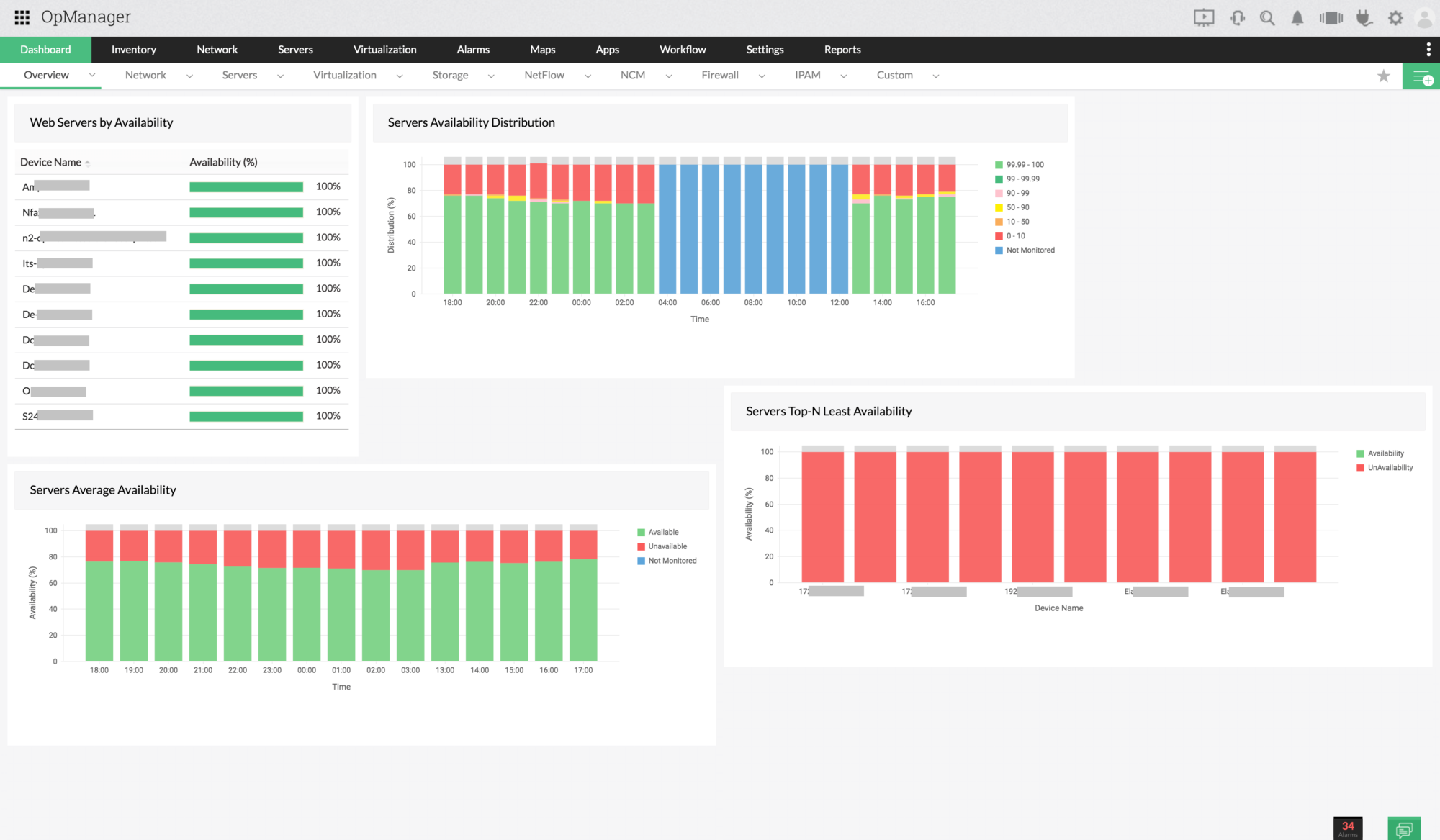
Monitoring Process Categories
The four categories of the monitoring process are Availability Monitoring, Configuration Monitoring, Performance Monitoring, and Cloud Infrastructure Monitoring.
Availability Monitoring is the process of ensuring that all services and components of a network are available at all times. It includes measuring latency, packet loss, and jitter on the network by using protocols such as ICMP Echo, Traceroute, and TCP Connect.
Configuration Monitoring ensures that all devices on a network are configured according to the organization’s best practices. This can be done through automated tools such as SNMP or by manual checks such as reviewing security logs.
Performance Monitoring measures how well the network is performing and helps identify bottlenecks or areas where performance can be improved. It involves collecting data from various points in the network such as routers, switches, servers, and applications. Protocols such as NetFlow or SNMP can be used to monitor traffic patterns and performance in real time.
Cloud Infrastructure Monitoring is used to monitor cloud-based systems such as Amazon Web Services (AWS) or Microsoft Azure. This type of monitoring focuses on resource utilization, application performance, and availability of services across cloud environments. It involves collecting data from various sources such as logs, metrics, and configuration files using tools like CloudWatch or Stackdriver.
Management Activities of Data Center
1. Network and Security Management: This involves establishing, monitoring, and maintaining the security of data center networks. It includes managing access control, ensuring the physical security of systems, implementing firewalls, and patching as needed to maintain overall security.
2. Infrastructure Management: This involves managing all the equipment in the data center including servers, storage devices, cooling systems, and power supplies. It also includes monitoring performance and capacity utilization and responding to problems as they arise.
3. Capacity Planning: This entails planning for future growth in capacity requirements by predicting the resources that will be needed for various workloads. It includes evaluating current infrastructure for scalability and assessing new technologies that could improve performance or efficiency.
Responsibility for Data Center Management
The Data Center Administrator (DCA) is responsible for the management of data centers. This includes ensuring that the physical infrastructure and software used to store, process, and access data are properly configured, maintained, and updated. DCAs also ensure that the data center provides reliable performance and meets business requirements.
The DCA is responsible for a range of tasks such as designing systems to meet specific needs; installing hardware; configuring software; monitoring performance; managing security; troubleshooting issues; maintaining documentation; performing backups; patching equipment; and responding to issues. They must stay up-to-date on industry best practices, security trends, new technologies, and cost-effective solutions.
To ensure optimal performance from the data center, DCAs must be familiar with all aspects of managed services including network management, storage management, server administration, system administration, and disaster recovery planning. They need to be able to identify problems quickly and take corrective action when necessary. The DCA is also responsible for staying in compliance with any applicable laws or regulations related to data center operations.
The Importance of a Data Center
A data center is a critical component of any IT infrastructure, and there are several aspects that make it successful. First, reliable power is essential for any data center. This includes a dedicated power supply from an external source to provide consistent electricity to the equipment, as well as backup generators or batteries to ensure uninterrupted service in the event of a power outage.
Second, effective cooling is also necessary for any data center in order to keep components from overheating and potentially becoming damaged or malfunctioning. Data centers should be equipped with HVAC systems that can regulate temperature and humidity levels, as well as proper insulation and airflow control mechanisms.
Third, adequate physical security measures must be taken to protect the equipment from damage or theft. This includes surveillance cameras, access control systems, physical locks, and even fire suppression systems in some cases.
Finally, the data center should have an adequate amount of space for current and future equipment needs. This means that there should be enough room for additional servers and other hardware without having to move existing components around or overcrowd the space.
In conclusion, a reliable power supply, effective cooling solutions, physical security measures, and ample space are all important aspects of a successful data center.
Conclusion
In conclusion, data center monitoring is essential for ensuring the optimal performance and reliability of data centers. It enables businesses to implement proactive maintenance and ensure that their networks are up and running properly. By monitoring availability, configuration, performance, and cloud infrastructure, organizations can ensure that their networks are running efficiently and securely. To maximize the effectiveness of data center monitoring, businesses should measure everything, understand effective power usage, consider cooling options, backup regularly, embrace DCIM technology, and practice predictive and proactive maintenance. With the right tools and processes in place, businesses can ensure the success of their data center operations.


